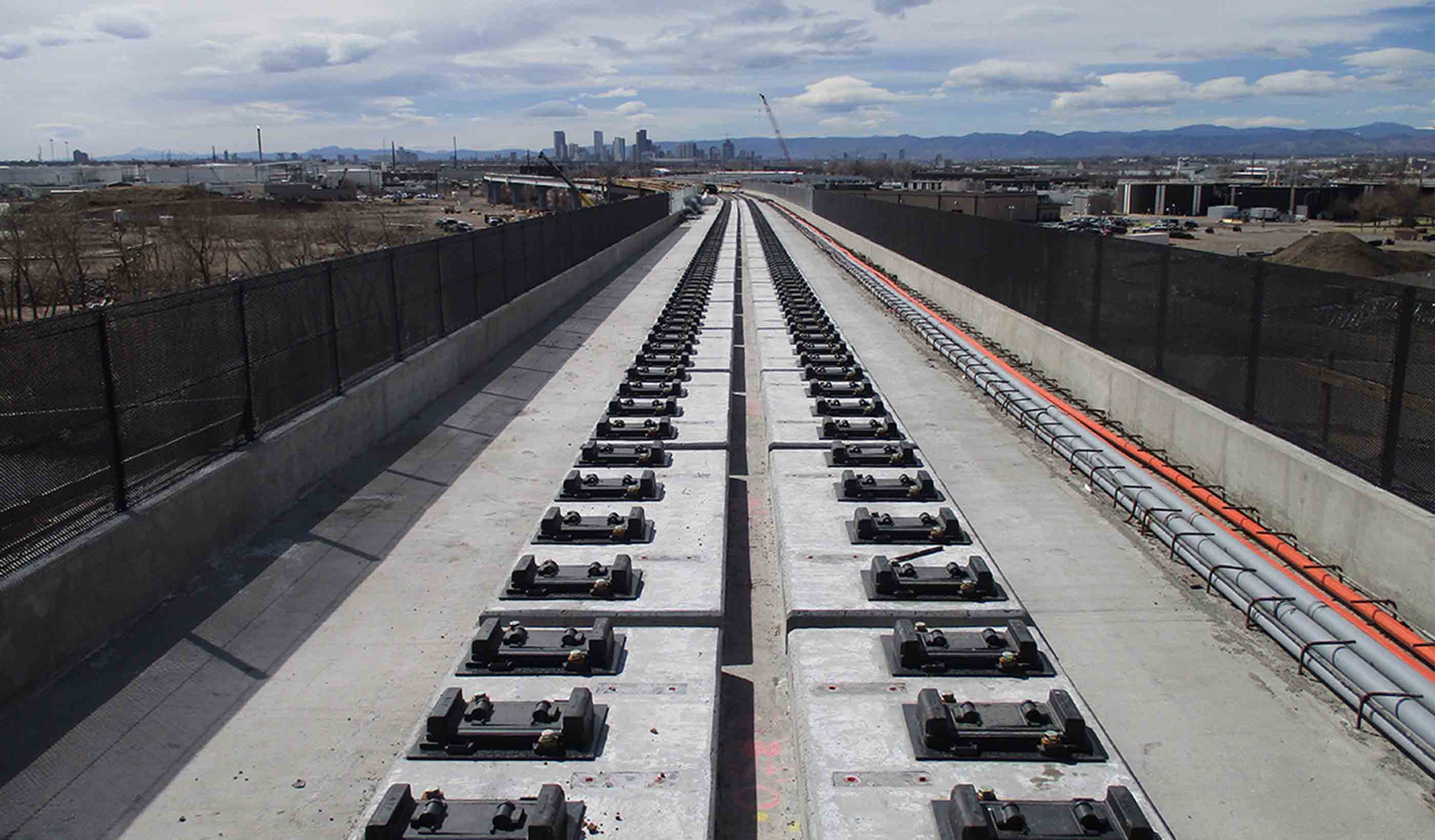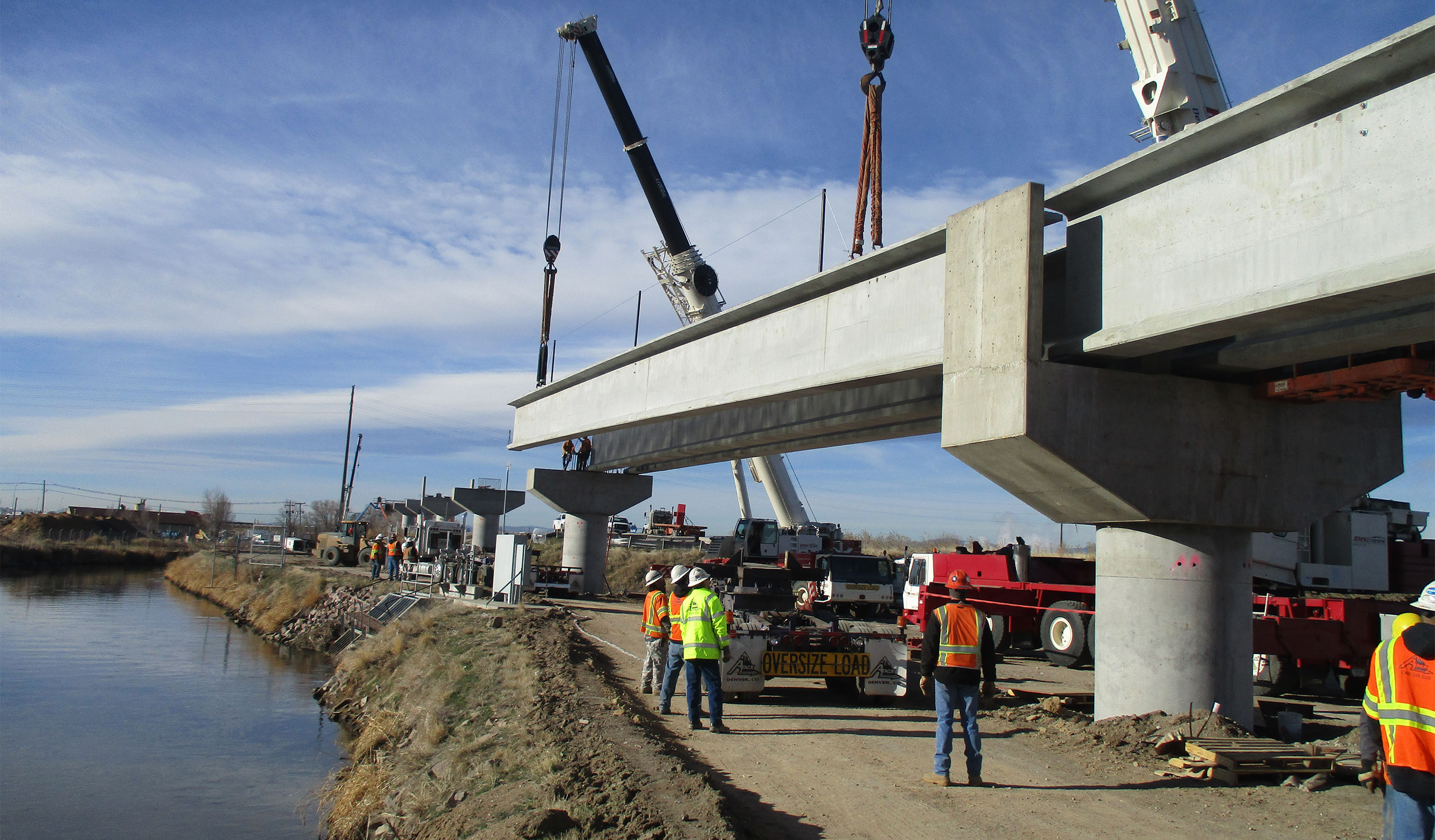A bridge to the future: Direct-fixation rail helps Denver commuter project span challenges
January 16, 2018
January 16, 2018
Creative design choices put 2-mile rail bridge on smooth track in fast-growing Colorado city
For cities around the world, innovative transportation systems can mean the difference between attracting the next generation of workers, while building business and economic prosperity—and being left at the starting line. In Denver, Colorado, new transportation projects are putting one of the fastest-growing cities in the United States and its residents on a track to success.
I’ve worked on some great projects, but the latest and one of the most inspiring is the North Metro Rail line, part of Denver’s Regional Transportation District (RTD) FasTracks program. The North Metro Rail line is an 18.5-mile electric commuter line that is currently under construction. This project provides much-needed rail access to ease a congested commute between Denver’s northern suburbs and the downtown area.

The Skyway Bridge is a nearly 2-mile long bridge that is part of the North Metro Rail line in Denver, Colorado.
One of the most exciting features of the project is the Skyway Bridge, a nearly two-mile (9,533-foot) curvilinear structure with 64 pre-stressed concrete girder spans. Upon completion, it will be the longest bridge in Colorado.
Beginning just north of downtown Denver, the Skyway Bridge navigates a tight corridor. On one side, it’s flanked by a refinery and paper plant; on the other, there’s a wastewater treatment plant. Between these obstacles is a large irrigation canal serving hundreds of farms along the Front Range, which the Skyway bridge crisscrosses. The elevated bridge was the best approach to minimize impacts to existing properties, to limit at-grade crossings, and to avoid environmental concerns related to soil near the refinery.
As metro areas nationwide consider and pursue new transportation projects, direct-fixation rail systems, including elevated bridges, can be an excellent option to help meet growing community needs.
A bridge project of this size is no small feat. In addition to its sheer scale, the structure is designed to support heavy rail vehicles, while providing comfortable travel to passengers. Selecting the proper rail deck is a key component to this type of project. A variety of factors are at play with any rail deck system, including weather, usage, and maintenance. Three common rail deck options were considered for this project:

The Skyway Bridge is using direction-fixation rails, which will be placed atop fasteners. Direct fixation eliminates the need for ballast, which reduces weight, and offers lower long-term maintenance costs.
The design team, in consultation with the client, selected direct fixation.
Using direct fixation, in combination with continuously welded rail on a curved structure of this length, required an innovative design approach to develop a computerized 3D model of the entire bridge. Due to varying degrees of vertical and horizontal curves along the two-mile track, and the differential in temperature between rail and concrete, direct fixation causes the rail to have complex interaction with the structure that cannot be accurately evaluated by traditional 2D analysis methods. By eliminating ballast, it also provides a substantially lighter weight structure for maximized span lengths in some of the more difficult sections of the bridge, reducing drilling needs and providing higher flexibility throughout the tight corridor. Additionally, direct fixation offers lower long-term maintenance costs and is consistently used across a variety of RTD rail projects.

Construction continues on the Skyway Bridge in Denver. The bridge was selected partly due to the tight corridor it navigates, including the irrigation canal pictured.
Designing one of the longest direct-fixation bridges in the US was an incredible challenge. But it also provided the opportunity to utilize innovative tools to ensure the design stayed on-time, on budget, and provided the best option for RTD. From the outset, our team developed a computerized 3D model of the entire bridge to capture the complex curvatures, along with potential rail issues and alignments. We also developed models to determine the rail and structure interactions during various temperature changes and dynamic analysis of the train system itself to ensure optimal rider comfort. As a result, the Stantec team provided a low-maintenance, resilient design that utilized continuously welded rail and eliminated the need for rail expansion joints along the entire nearly 10,000 feet of bridge track. This was very important to RTD since it eliminated the high long-term maintenance costs typically associated with rail expansion joints on direct fixation bridges.
As metro areas nationwide consider and pursue new transportation projects, direct-fixation rail systems, including elevated bridges, can be an excellent option to help meet growing community needs—a highly attractive option for clients when conditions make it feasible. At Stantec, we see the opportunity for direct fixation to be a truly innovative solution as higher speed rail systems begin to take shape.